The history of camouflage and technology "invisibility"

Frame from the movie "Predator"
Camouflage (camouflage coloring of military uniforms, monophonic or multicolored) was massively used by the military of the whole world relatively recently - from the end of the XIX century Prior to this, the military uniform looked much more attractive - bright colors, mostly blue, red and white, epaulettes, shiny buttons. All this greatly facilitated the management of troops on the ground. Then, technical progress and improvement of the methods of warfare made it necessary to make the soldiers less noticeable against the background of the surrounding nature, and for more than 100 years this task was being solved with varying success by various camouflages. But now the military is no longer cunning enough to paint the form, and scientists are looking for fundamentally different approaches to hiding people and equipment on the ground.
In 2004, the United States Army received a new Universal Camouflage Pattern (UCP) digital camouflage - a universal solution for all types of environments. But in just a few months, as the fighting in Iraq intensified, every soldier already knew: UCP does not work in almost any environment . Thus, there was an urgent need to find a replacement for him. They announced the launch of the Camouflage Improvement Effort program, which, in 2012, The Daily newspaper aptly described as "a mess of $ 5 billion ." Hundreds of developers sent camouflage schemes to the contest, only four reached the final. Four years later (and having invested several million dollars), the US Army decided on the winner.
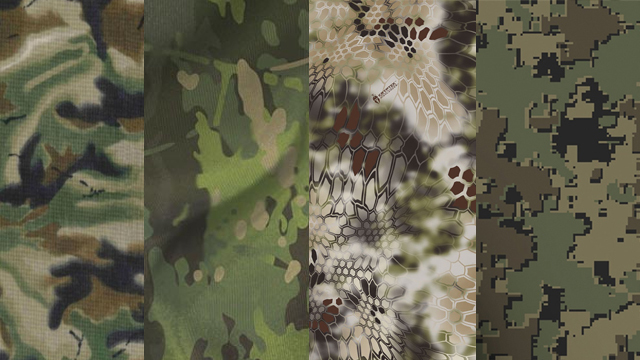
Finalists for Brookwood, Crye Precision, Kryptek, ADS Inc. and Guy Cramer.
')
The winner was the camouflage Scorpion W, developed in the Crye Presicion. Subsequently, he underwent some refinement ( Scorpion W2 ) and was adopted by the name of the OCP (Operational Camouflage Pattern).
As for the Russian army, since 1998 the all-army camouflage has been the VRS-98 “Flora”, which in recent years has been replaced by the digital version.


However, military technology is developing rapidly, and no one can imagine how camouflage schemes will have to be adapted in the long run. We still do not know so much about how the human brain interprets visual information. And the long-term costly efforts of the military to search for the perfect camouflage has not yet been crowned with success.
Brief invisibility history
The need to make the soldier less noticeable arose in the XIX century. after the appearance of long-range weapons. In different armies of the world began timid experiments on the use of green and gray protective colors of the form. During the First World War, fleets from different countries began to apply so-called “blinding” camouflage drawings, making it difficult to estimate the distance to the ship and its course, which was critically important for pointing guns and torpedo tubes.


Soon, similar decisions began to be tested in relation to the infantry.
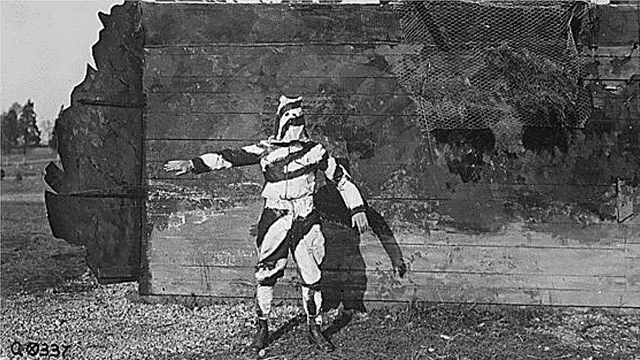
By the 1930s, more modern schemes had appeared, for example, the Soviet Ameba.

And with the beginning of the Second World War, camouflage began to develop very quickly.


In the late 1970s, Dual Texture camouflage appeared - the forerunner of modern digital camouflage. It consisted of large squares, large and small combinations of which were to break the silhouette at different distances.

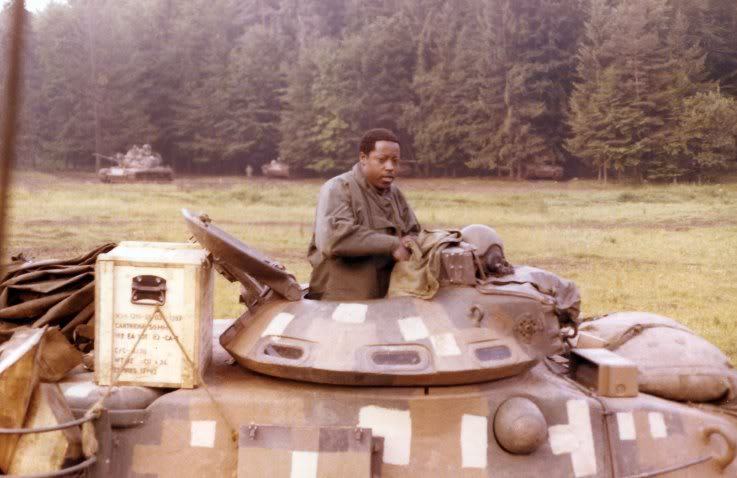
Finally, in the 1990s, the introduction of digital camouflage began with the widespread use of night vision devices in the armies of different countries. Their peculiarity is that the edges of the spots form not curved lines, but a “pixel” grid of small squares, which makes the soldiers invisible to night-vision devices. That is, in the eyepieces a person camouflaged by a “digit” or a technician did not stand out against the background of the surrounding landscape.
In addition, digital camouflage works better under normal lighting, because it looks more like fractal patterns that the human eye (or rather, the brain) interprets as white noise. In other words, digital camouflage looks less “natural”, therefore it attracts attention worse.
However, the human eye is a very complex optical instrument, and the brain is able to isolate images even in very complex environments. And therefore it is almost impossible to create a single universal camouflage that can “hide” soldiers in all possible situations - in the forest, in the mountains, in the desert, in urban areas, in the field, etc. Do not forget that the same forests are VERY different, and camouflage, working perfectly in the Scandinavian thickets, can be practically useless somewhere in the Volga region. As a result, many companies around the world began to create all kinds of digital camouflage.
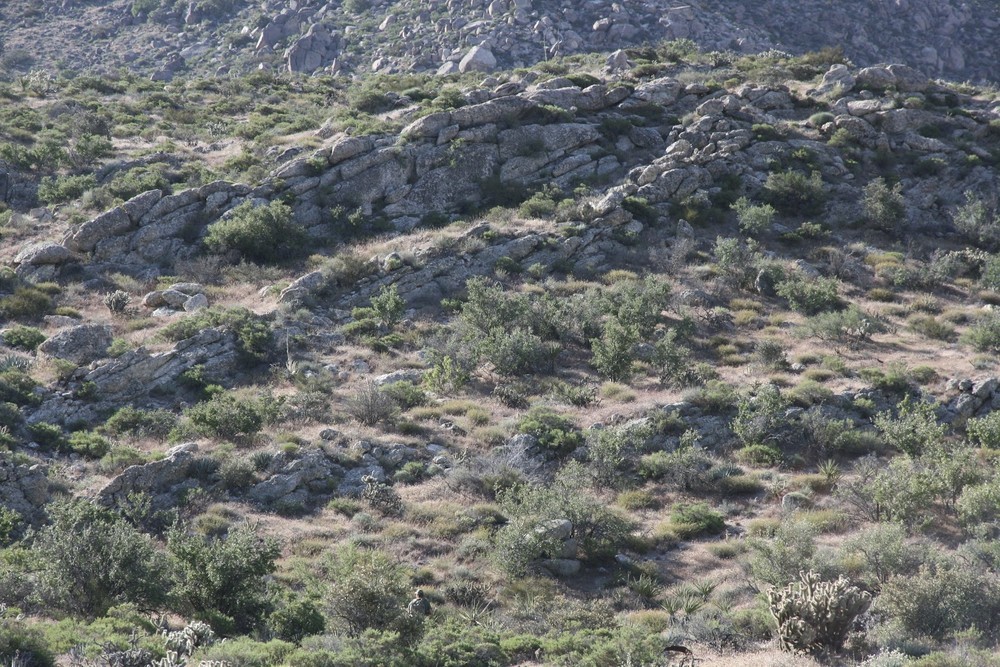
"See the gopher?" And he is "(c). This photo contains a man in the US4CES camouflage, designed by Guy Kramer and ADS Inc.

To reduce the visibility of people, weapons, equipment, structures by breaking the silhouette camouflage is used in games. In “ Armored Warfare: Armata Project ” you can arm yourself with a spray paint and put dozens of different camouflages (one at a time) on your tank, divided into three groups - “figure”, fractal and stripes.
Features of our vision
From the point of view of our brain, digital camouflage does not “infuse” a person into the surrounding landscape, but rather artificially deprives the body. For the brain, digital camouflage is “inconvenient,” so he tries not to notice it. It is not enough just to scribble pixels on the fabric at random. Creating an effective digital circuit is not an easy task. An important role here is played by the choice of colors and the structural features of the human eye.
Consider the UCP failure camouflage mentioned at the beginning of the article:

All digital camouflage contains two visual-logical layers: micrographs (pixels) and macrographs (the shape of spots formed by pixels). If the scale of the macro pattern is too small (as is done in the UCP), then an optical phenomenon of “glow” (isoluminance) occurs. Its essence is that a carefully designed camouflage pattern turns into a light mass. As a result, a person is not only clearly visible, but even attracts attention on the ground.
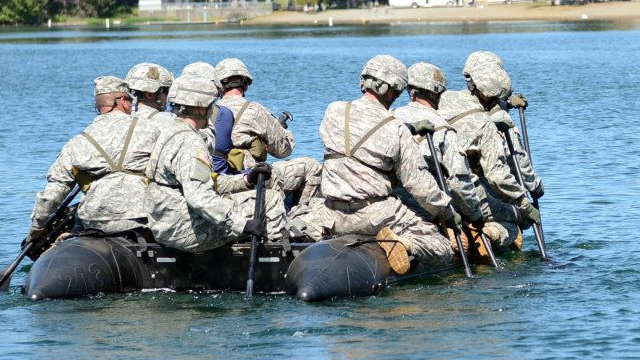
Another fatal mistake was the lack of black in the UCP. Officials explained this by saying that black is absent in nature. However, this is absolutely not the case: black and brown are extremely important for the image of shadows. Therefore, for example, in camouflage US4CES (the fourth finalist of the Camouflage Improvement Effort program), the so-called “boundary luminance” is used: thin black lines around the macro and micro patterns that make our eye perceive them as three-dimensional objects.

In the absence of these pseudo-patterns, the pattern would lose depth and would be perceived as two-dimensional.
Economies of scale
An unexpected problem when creating digital camouflage is associated with ... its mass production. Camouflage is designed to break the silhouette of a person by some key points, such as the wrists, knees, ankles.
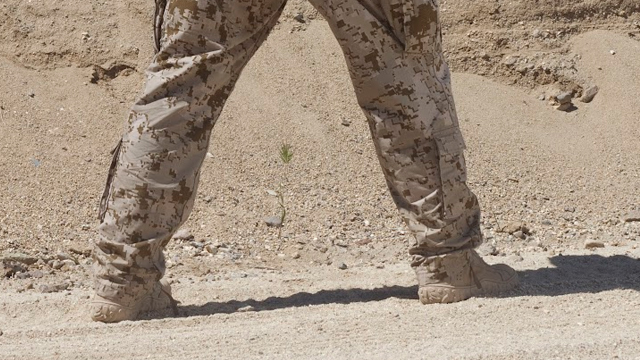
Camouflage US4CES.
Something similar can be observed in tigers: the stripes run perpendicular to their limbs. But during mass production of the form, when patterns are made from rolls of fabric for sewing hundreds of thousands of sets of clothes, it is very difficult to predict exactly where these visual “breaks” will pass.

In addition, the human brain is well able to recognize patterns. If we see some kind of image twice, then we immediately feel something familiar. Or, if we talk about war, that something is wrong here. Therefore, it is imperative that the right and left parts of the uniform never coincide. However, many camouflage schemes have a similar disadvantage. Our brain notices some kind of anomaly on the right side of the chest, and if it sees a very similar pattern on the left side, it will immediately compare these two facts and conclude that it sees the upper part of the human body.
A huge role in the creation of camouflage plays the use of geometric fractals .
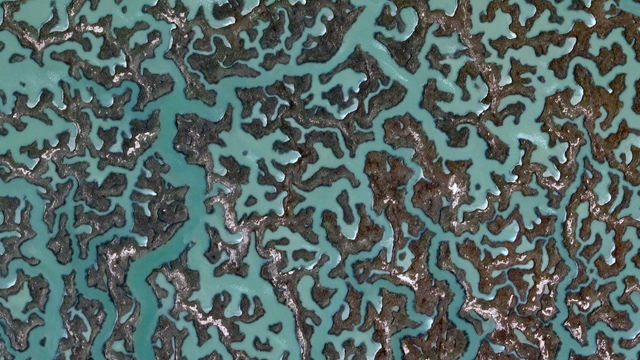
An example of a fractal landscape pattern in Google Earth .
If, when looking at a fractal, it is not possible to estimate its scale, then the eye cannot separate the fractal from the background environment.
Comprehensive testing
The process of testing camouflage is almost as important as its creation.

In the eastern part of Baghdad.
For example, in the US Army, snipers with perfect vision are attracted for testing. They are planted in front of a computer with a tracking system of the direction of gaze, and in the slide show mode they show thousands of photographs that show all kinds of landscapes with people in the tested camouflage. Filming is done in all possible natural environments (from deserts to swamps) and in all possible weather conditions. An important role is also played by the distance to the person, because camouflage should work well both near and at long range.
When viewing photos, the system tests how quickly snipers can detect a visual anomaly in the picture - a person lying on the ground in combat conditions. In real situations, these milliseconds are crucial when making decisions. For most camouflage, the average sniper detection time is 8-12 seconds.
New stage of development
In August 2013, a US special forces detachment was withdrawn ahead of time from a mission in Libya, because a group of terrorists had stolen weapons and equipment from a military truck. It would seem, where does the camouflage?
The fact is, among other things, was stolen night-vision device capable of detecting short-wave infrared radiation ( SWIR ) with a wavelength of 1.4-3 microns. The device, which costs $ 45,000, allows you to see people in any camouflage in the form of white figures.
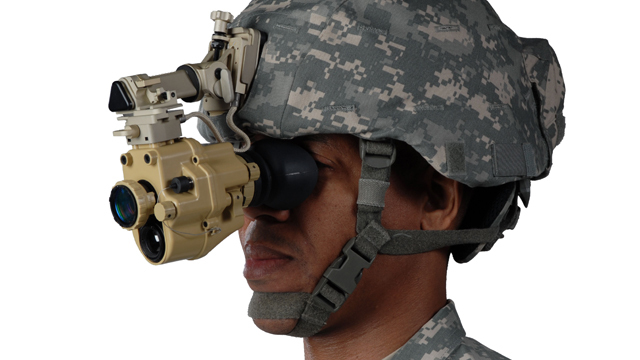
As you can see, technical progress again requires changing the approach to the creation of military uniforms. Since the XIX century. a very long way has been done so far, but soon equipping the soldiers will allow the enemy’s attempts to go unnoticed. Yes, there is already a military uniform on sale, made of a fabric that practically does not emit in the infrared spectrum. But this is a palliative solution. The next stage in the development of camouflage is likely to be the emergence of technologies of "invisibility" - for example, fabrics whose fibers allow the rays of light to "go around" the hidden object. Or smart chameleon cloths that generate patterns depending on the current environment.

The concept of "smart" camouflage fabric.
Today, such developments are a real high-tech camouflage, and therefore are carefully guarded. But there is no doubt that the synergy of technology in the relatively near future will still lead to the creation of "invisible" camouflage. And it will make another revolution in military affairs.
Actually, we have already written about the possibility of creating “invisible” material on Hi-Tech Mail.Ru. Two technologies were developed. One uses metal layers of the nanoset, the other uses silver nanowires. The use of developed metametals (artificial metals) allows changing the usual propagation of light, forcing it to bypass the electromagnetic wave around the object. The reason for this behavior of light is the negative refractive index. Both materials achieve a negative refractive index by minimizing the energy lost when light passes through them.
PS We could not help but post this magnificent camouflage pattern for urban conditions.
PPS The text is based on the article “ The History of Invisibility and the Future of Camouflage ” with our additions.
Source: https://habr.com/ru/post/369525/
All Articles